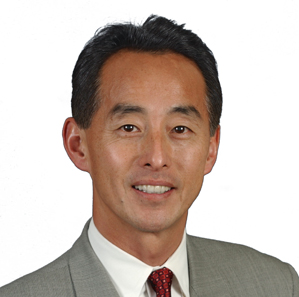Samsung is already becoming one of the big heavy hitters in tech, but it’s looking to make more investments to ensure its place as the so-called “fifth horseman” alongside Amazon, Apple, Facebook, and Google. The company announced today that it is committing to investments in new technology, with the launch of its new Samsung Strategy and Innovation Center (SSIC), as well as a $100 million commitment to a new Samsung Catalyst Fund, to fund development of components and subsystems. That’s all alongside the $1 billion that Samsung is investing through its Venture Americas Fund and its existing R&D centers around the world.
The new Innovation Center will be headquartered at Sand Hill Road in Silicon Valley, and will be led by Samsung Electronics president and chief strategy officer Young Sohn. Today at a press conference, Sohn laid out the company’s strategy for investing in innovation over the next several years.
By 2020, Sohn said, Samsung expects there to be 120 billion connected devices around the world. And the company wants to connect all of those devices, hopefully capturing an ever-larger portion of the electronics market in the process. Samsung hopes to double its revenue between now and 2020 and grow to a $400 billion company by that time. With the growing number of devices, Samsung sees the need for new technologies around cloud infrastructure, mobile privacy, Internet of Things, and other related topics.
While much of Samsung’s R&D and innovation previously happened in Korea, the company sees a huge opportunity to find and take advantage of other innovators around the world. Sohn highlighted Samsung’s ability to control its own supply chain and create its own component infrastructure. But it knows that it won’t be able to go it alone in the future.
With that in mind, Samsung is committing a huge amount of money to discover solutions around this fast-moving world of connected devices. That begins with the creation of the SSIC, which, while based in Silicon Valley, will also tap into other R&D centers around the world. “Being in Silicon Valley is critical because this is the epicenter of disruptive innovation,” Sohn said.
Samsung will also continue making moves in M&A, Sohn said, pointing to examples of acquisitions that the company has made in Cambridge and Santa Clara. It’s also focused on further investment through venture capital, both through its new Catalyst Fund and its existing $1 billion Samsung Ventures America Fund.
Sohn pointed to an increased hunger for investment in technologies that typical VCs have ignored. He pointed out that most investment has been very app-centric or focused on later-stage investment. Samsung, by comparison, sees more innovation that can be invested in through more hardware-based or infrastructure systems.
As a result, the new Catalyst Fund will kick off to focus on components and subsystems, and to support it, Samsung is holding a competition. The SamsungCreate Challenge, which the company will launch later this year, will be run through the SSIC and will be focused on promoting innovation through Samsung’s Device Solution Architecture platform. Samsung will award $10 million in seed investments to winners of the contest and will provide incubation and support through its new Silicon Valley location and through partnerships with various R&D technologists.
In addition, the company will continue to invest through its $1 billion Samsung Ventures America Fund. That fund did 20 deals for $160 million in 2012, and over the years has seen more than 60 exits, with 47 IPOs and 16 acquisitions. As a strategic investor, Samsung has been focused on many technologies that other investors have ignored. Sohn pointed out that very few VC firms are making investments in hardware or chips, places where Samsung can provide real value, and where Samsung hopes that other technologists can help provide new solutions.
While Samsung has already been operating in Silicon Valley for some time, Sohn wouldn’t comment on the number of people who will be working through the SSIC at start. According to Sohn, the company will have an open budget, and will invest appropriately depending on the size of the opportunity in front of it. But, he also said that he’s not a big believer in hiring hundreds of employees, instead preferring to have a manageable size of people in the right places.
